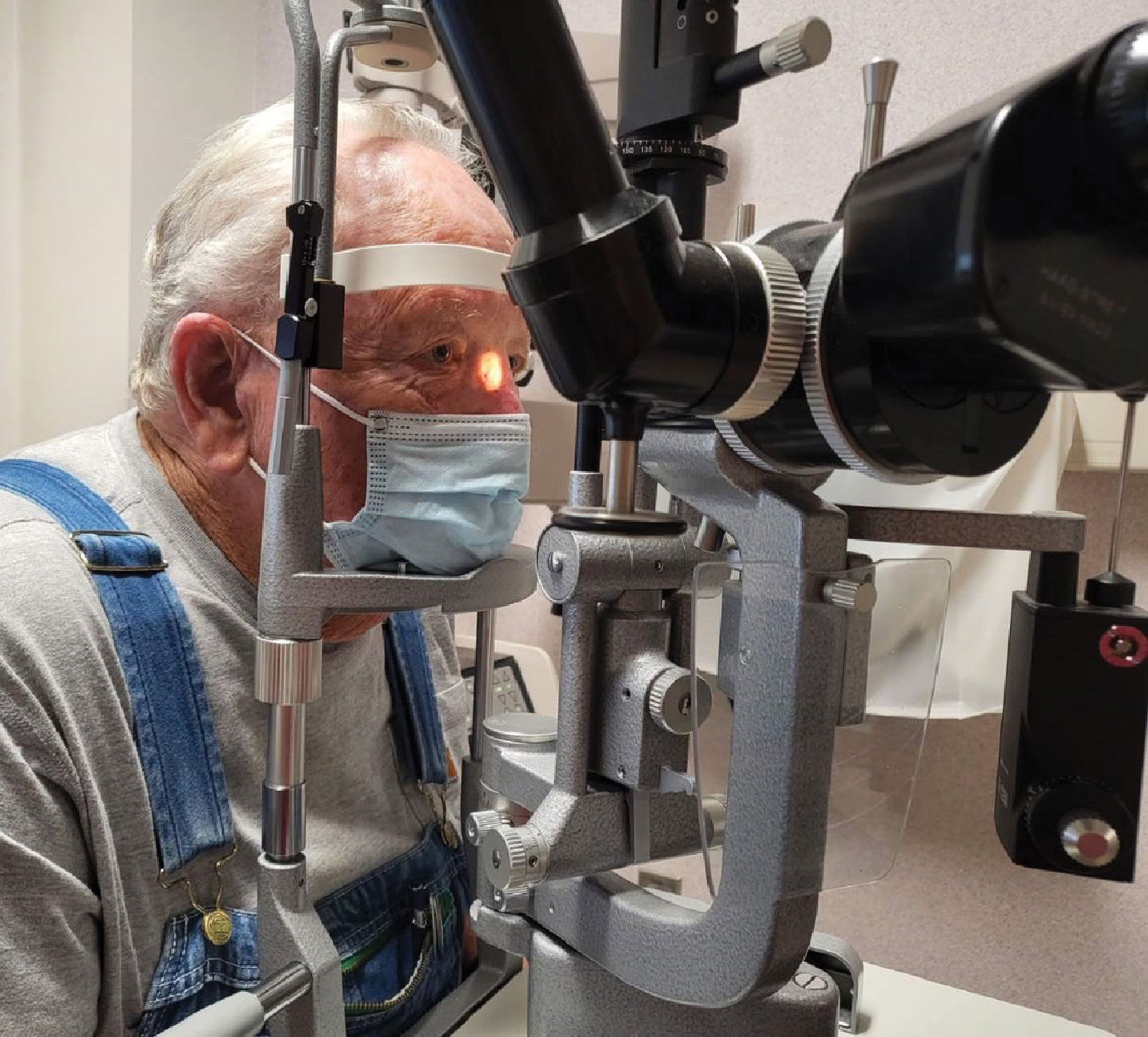 |
| All examination-based measures of vision were significantly associated with more fragmented daily activity, which has significant implications for the well-being of older adults with impaired vision. Photo: Sara Weidmayer, OD. Click image to enlarge. |
Routine physical activity is a well-established predictor of health and well-being, and its restriction is strongly correlated with an increased risk of morbidity and mortality. Vision impairment is significantly associated with physical activity restriction, with some studies comparing its impact to that of stroke and other serious medical conditions. Researchers at the Wilmer Eye Institute at Johns Hopkins University School of Medicine in Baltimore explored the impact of objective vision measures on novel metrics of objectively measured physical activity in US older adults. They found those with vision impairment spent less overall time engaged in physical activity, largely as a result of shorter (but not less frequent) bouts of activity. Their findings were recently published in Ophthalmology Science.
Among 723 individuals, sampled from 10,443,338 older adults in the US, 30% had any objective vision impairment. All participants were provided with an accelerometer watch, instructed to wear it on their non-dominant wrist, and keep it on 24 hours a day for a period of seven consecutive days. An active bout was defined as one or more consecutive active minutes. Activity fragmentation was defined as the probability of an active minute being followed by a sedentary minute, with higher values indicating more fragmented activity. Time until 75% activity was defined as the time taken to complete 75% of daily activity starting from their first active bout.
Any objective vision impairment was significantly associated with lower number of active minutes per day (7.8% fewer), shorter active bouts (7.0% shorter) and greater activity fragmentation, while no associations were found with number of active bouts. Time until 75% activity did not significantly differ between adults with any objective impairment and those without.
The researchers also noted that their data suggests that adults with worse distance and near visual acuity (VA) may be more active during the early morning hours, while adults with worse near VA may experience a decrease in activity in the afternoon. Similarly, adults with worse contrast sensitivity take more time to complete 75% of their activity. Nevertheless, the study also demonstrated a diminished reserve capacity in older adults with vision impairment and therefore a reduced ability to sustain activity throughout the day.
“Those with lower mobility may be less likely to seek eye care, including refractive correction, addressing reversible causes of vision loss such as cataracts, and prevention of chronic diseases,” the researchers wrote in their paper. “With the ability to monitor real-world activity objectively using wearable technology, future longitudinal studies and clinical trials should incorporate objective measures of physical activity to determine the temporality of these associations and to investigate the effectiveness of environmental or behavioral interventions in safely improving mobility, and therefore reducing this activity restriction, in older adults with vision impairment.”
Almidani L, Varadaraj V, Banerjee S, et al. The quantitative impact of visual function on accelerometer-measured physical activity in older US adults: a nationwide cross-sectional analysis. Ophthalmol Sci. December 29, 2023. [Epub ahead of print]. |

